GDMS inks $800m Deal for US Navy Torpedoes
General Dynamics Mission Systems was awarded a fixed-price-incentive, firm-fixed-price, cost-plus-fixed-fee, and cost-only contract from the U.S. Navy in December for up to $808.6 million to produce MK 54 MOD 1 Lightweight Torpedo Kits and related test equipment, spares, provisioned item orders, engineering support and hardware support for the MK 54 Lightweight Torpedo Program. Work will be performed in Canonsburg, PA, and is expected to be completed by December 2032.“Our Progeny Systems employees have been providing advanced torpedo electronics to the U.S. and allied Navies for 18 years. This contract ensures that our surface ships and aircraft will have the most modern and capable torpedoes in the world for many years to come…
General Dynamics Mission Systems to Develop Clandestine Mine Delivery System

General Dynamics Mission Systems has been awarded a $15.9 million contract by the U.S. Navy to develop its Mining Expendable Delivery Unmanned Submarine Asset (MEDUSA) system.MEDUSA is a tactical, clandestine mining system using an expendable Unmanned Underwater Vehicle (UUV) that can be launched from a submarine torpedo tube. The U.S. Navy is developing MEDUSA to address the need for an advanced maritime mining system with long-range offensive mining capabilities.The scope of the newly awarded research and development effort includes the design…
US Navy Christens the Future USNS Point Loma

A ceremony was held on Saturday to mark the christening of the future USNS Point Loma (EPF 15), one of 16 expeditionary fast transports (EPF) the U.S. Navy has contracted Mobile, Ala. shipbuilder Austal USA to build.EPF Flight II provides a Role 2E (enhanced) medical capability which includes, among other capabilities, basic secondary health care built around primary surgery; intensive care unit; ward beds; and limited x-ray, laboratory and dental support. The EPF’s catamaran…
Rayha to Succeed Graney as President of General Dynamics Electric Boat

Mark Rayha has been selected to become the next president of Electric Boat, the submarine builder's parent company General Dynamics announced on Thursday.Rayha, who serves as the yard's current senior vice president and chief operating officer, will succeed Kevin Graney, who will retire at the end of this year. Rayha's appointment becomes effective December 1.Rayha joined General Dynamics in 1989 at Land Systems. He became CFO of General Dynamics Mission Systems in 2015. He joined Electric Boat in 2020 and served as CFO from 2021 to 2023.
Navy Combat Craft - Boats Evolve to Keep Pace with Threats
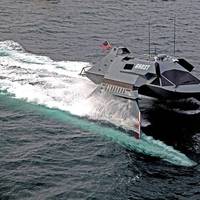
Combat craft are used by both large and small navies, and every navy, coast guard or maritime service operates some kind of boats.The U.S. Navy’s boats are used for a variety of tasks from personnel and cargo transport to ship repair and maintenance to environmental response.The combat craft range from pull sized patrol boats down to ridged-hull inflatable boats (RIBs) armed with machine guns. Boats include shipboard RIBs, maritime security boats, dive support boats, workboats…
Austal USA Delivers USNS Apalachicola (EPF 13)
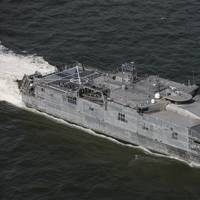
Mobile, Ala. shipbuilder Austal USA delivered Expeditionary Fast Transport USNS Apalachicola (EPF 13) to the U.S. Navy. This is the second Navy ship named after the coastal Florida city; both ships were built in Mobile.EPF 13 is now the largest surface ship in the U.S. Navy fleet with autonomous capability. EPF 13 went to sea five times over a several-month duration allowing Austal USA and their industry partners, L3Harris and General Dynamics Mission Systems, to test and analyze…
Future USNS Apalachicola (EPF-13) Completes Acceptance Trials
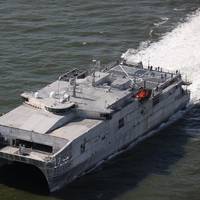
Austal Limited announced that the future USNS Apalachicola (EPF-13) has successfully completed acceptance trials for the U.S. Navy.Constructed at Austal USA’s Mobile, Ala. shipyard, EPF-13 is the first Spearhead-class Expeditionary Fast Transport (EPF) ship with capabilities for V-22 Osprey flight operations and enhanced medical support. It is also the U.S. Navy’s largest ship with the capability to operate as an unmanned surface vessel (USV).Austal Limited Chief Executive Officer Paddy Gregg said the completion of acceptance trials for EPF-13 was a significant milestone…
Subsea Defense: Navy Deepens Commitment to Underwater Vehicles
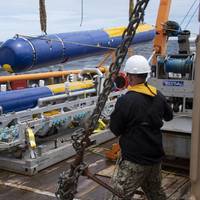
The U.S. Navy uses unmanned and robotic underwater vehicles for a multitude of functions, including environmental sensing, mine hunting, and salvage. The Navy plans to evolve an unmanned systems operating concept that is platform agnostic and capable of operating in highly complex contested environments with minimal operator interaction.The most recent edition of the Navy’s Unmanned Systems (UxS) Roadmap was issued in 2018, and a new version is expected in the near future. The 2018 document states that UxS will operate in every domain…
Austal USA Delivers USS Oakland, the US Navy's 300th Ship
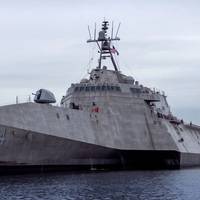
The U.S. Navy accepted delivery of the future USS Oakland (LCS 24) Friday during a ceremony at Austal USA in Mobile, Ala. The delivery marks the final milestone prior to the ship's scheduled commissioning in early 2021.Oakland is the 22nd littoral combat ship (LCS) and the 12th of the Independence variant to join the U.S. Navy fleet. Its delivery marks the official transfer of the ship from the shipbuilder to the Navy, bringing the service's inventory up to 300.“This is a great day for the Navy and our country with the delivery of the future USS Oakland,” said LCS program manager Capt.
For the Royal Australian Navy, Technological Leap Starts Small

Driven by the need to organically protect maritime Task Groups from the threat of sea mines, the Royal Australian Navy is introducing a deployable Mine Counter-Measures (MCM) capability under the first phase of Project SEA 1778.The Royal Australian Navy’s (RAN) SEA 1778 deployable Mine Counter-Measures (MCM) capability is both a small step forward in the spiral development process and a “technological leap” into autonomy.”The RAN is looking to replace its four legacy Huon-class minehunter coastal ships (MHCs) with a new deployable MCM capability.
General Dynamics Wins $40.3 Mln LCS Combat Systems Contract

General Dynamics Mission Systems said it has secured a $40.3 million contract to support the Naval Surface Warfare Center, Dahlgren Division (NSWCDD) in its role as U.S. Navy Littoral Combat Ship (LCS) Independence-variant Software Support Agent (SSA), Combat Management System (CMS), and In-Service Engineering Agent (ISEA).The contract, awarded May 1, will provide support for LCS Independence-variant CMS efforts. As the prime contractor, General Dynamics’ responsibility will be…
Interview: Dr. Catherine Warner, Director, NATO CMRE

At CMRE, it’s not just about the science. It’s about building trust and confidence in resilient systems. An interview with Dr. Catherine Warner, Director, NATO Center for Maritime Research and Experimentation, La Spezia, ItalyTell us a little about yourself and CMRE. What does CMRE do, and how do you see your mission evolving?I came here from the Pentagon, where I was the science advisor for the director of operational test and evaluation. My experience has been working with operators on systems that they’re getting ready to field.
NATO employs MUSCLE Memory to Find Mines
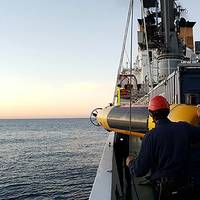
Underwater vehicles communicate, make decisions, and work as a teamThe NATO Center for Maritime Research and Experimentation (CMRE) in La Spezia, Italy, is combining smarts and muscle to solve a complex warfighting challenge: finding and destroying mines in the murky waters of the littoral.CMRE has developed experimental unmanned vehicles for experimentation. Now it is evolving those vehicles to communicate and cooperate with each other, and to solve problems on their own.According to CMRE’s director Dr.
USN: Knifefish UUV Program Achieves Milestone
The Program Executive Officer for Unmanned and Small Combatants (PEO USC) granted Milestone C approval to the Knifefish Surface Mine Countermeasure Unmanned Undersea Vehicle Program. The decision clears the way for low-rate initial production (LRIP) of the system, PEO USC announced Aug. 23.The Navy is expected to award a LRIP contract to Knifefish prime contractor General Dynamics Mission Systems.The Knifefish system is designed for deployment from the littoral combat ship (LCS), vessels of opportunity or from shore to detect and classify buried, bottom and volume mines in high-clutter environments. Knifefish is a critical element of the LCS Mine Countermeasure Mission Package and will reduce risk to Navy personnel and equipment.The Knifefish system…
Navy of the Future: The Revolution & Evolution of Surface Combatants
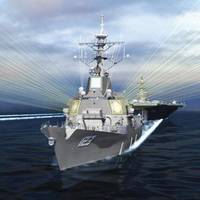
Following the drawdown at the end of the Cold War, the Navy finds itself trying to build up again. The expansion of Russian and Chinese naval power has changed the calculus. While there will always be a debate about the final number of ships to build, we can all agree on one thing: the Navy must get bigger and the demand signal is to start building now,” said Chief of Naval Operations Adm. John Richardson, in testimony before Congress regarding the sea service’s 2019 budget request.
Canada's Halifax-Class Frigates Get a Sonar Upgrade
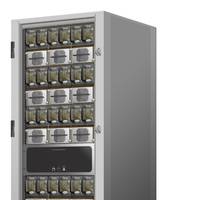
Nautel, together with General Dynamics, will upgrade and maintain underwater sensors on the Halifax-class frigates for the Royal Canadian Navy (RCN) as part of the Underwater Warfare Suite Upgrade (UWSU) contract awarded to General Dynamics Mission Systems–Canada.The upgraded sensors will offer the RCN an improved ability to detect and track underwater threats utilizing advanced Sonar amplifiers and transducers designed and manufactured by Nautel.As part of the hull-mounted sonar upgrade program, Nautel will supply NS72-36 sonar amplifiers and Mk II broadband transducers.
OPTECH South 2017: Littoral Challenges in Colombia

Naval experts from around the world are meeting in Cartagena, Colombia, for the Operations and Technology (OPTECH) South 2017 conference. The event is being conducted by the U.S. Naval Postgraduate School’s (NPS) Littoral Operations Center (LOC), supported by the Office of Naval Research-Global and the Colombian Naval Science and Technology Office and Swedish defense company Saab. The littoral is the complex “near shore” environment where hydrography, geography, commerce, fishing…
General Dynamics AUV Detects Threats to Ship Hulls
General Dynamics Mission Systems featured the Bluefin Robotics hovering-autonomous underwater vehicle (H-AUV) at OCEANS 2016 in Monterey, California. The Bluefin Robotics H-AUV locates, identifies and maps structural issues on a ship’s hull including large ocean going cargo ships, petroleum and chemical tankers, cruise ships and military surface and sub-surface vessels without dry-docking the ship. “Inspecting ship hulls and other underwater surfaces can be a manpower- and cost-intensive part of a ship’s observation and maintenance,” said Matt Graziano, director of Autonomous Undersea Systems for General Dynamics Mission Systems. The Bluefin Robotics H-AUV operates autonomously and navigates along a hull, bridges or piers.
GD Bluefin-21 AUV Launches Bluefin SandShark Micro-Underwater Vehicle
The General Dynamics Bluefin-21 autonomous underwater vehicle (AUV) successfully launched multiple Bluefin SandShark micro-autonomous underwater vehicles (M-AUV) Underwater vehicle (M-AUV as part of several capability demonstrations at the U.S. Navy sponsored 2016 Annual Naval Technology Exercises (ANTX) in Newport, R.I. Through several ANTX demonstrations, the Bluefin SandShark M-AUVs surfaced and functioned independent of the heavyweight-class Bluefin-21. In one mission scenario, the Bluefin-21 simulated data collection and transfer of target imagery and other information to two Bluefin SandSharks. Those Bluefin SandSharks then surfaced to communicate with a Blackwing unmanned aerial vehicle.
US Navy Orders General Dynamics' DMR Radios
The U.S. Navy awarded a contract modification to General Dynamics Mission Systems to build and deliver more than 30 new AN/USC-61(C) Digital Modular Radios (DMR), along with related materials and equipment for new Navy surface vessels and submarines. The software-defined radios are a mission critical communications hub for Navy vessels and submarines. The contract modification exercises the sixth option to a contract awarded to General Dynamics in 2010. A majority of the work will be done at General Dynamics’ Scottsdale, Arizona, location. “This contract demonstrates the Navy’s continuing trust in DMR as it keeps pace with new and innovative communications technology for sailors and their commanders to securely connect with one another anywhere…
SEWIP 1B3 Production Contract for General Dynamics
The U.S. Navy has awarded a production contract for its Surface Electronic Warfare Improvement Program (SEWIP) Block 1B3 to General Dynamics Mission Systems. General Dynamics will deliver Block 1B3 system upgrades over the next five years. The upgrades will be integrated into new and existing Navy ships providing significantly improved situational awareness of the tactical environment surrounding the ship. General Dynamics has been involved with the SEWIP Block 1 program since 2003 and received a low-rate initial production contracts for the SEWIP Block 1B3 in 2014. Work on the contract will take place in Pittsfield, Massachusetts. SEWIP is comprised of capability improvements divided into production blocks.
General Dynamics Upgrades RVSS for CPB
General Dynamics successfully completed the initial field deployment and test of the Remote Video Surveillance System (RVSS) upgrade for the U.S. Department of Homeland Security's Customs and Border Protection (CBP). This test demonstrated many technical capabilities of the RVSS system and is a key program milestone in its deployment schedule. U.S. Border Patrol agents are currently operating the RVSS in Nogales, Ariz., and CBP has also initiated deployments in both Naco and Douglas, Ariz. "The Remote Video Surveillance System is a critical element of our overall plan to secure the border, increase our mission effectiveness and protect our agents," said Mark Borkowski, assistant commissioner and chief acquisition executive of CBP's Office of Technology Innovation and Acquisition.
New DMRs for USN Destroyers, Submarines under Construction
The U.S. Navy has ordered 56 AN/USC-61(C) Digital Modular Radios (DMRs) and related equipment from General Dynamics. The newly built DMR radios will be capable of using the Mobile User Objective System (MUOS) waveform, the digital dial tone needed to make voice calls to the U.S. Department of Defense's next generation, narrowband MUOS satellite communications system. The four-channel radios form the foundation of the Navy's network communications aboard submarines, surface ships and on-shore locations. This order, valued at over $29 million, exercises option five on a contract awarded to General Dynamics in 2010. "DMR is an extremely versatile radio and we continue to update its capabilities to ensure that Navy communications networks have the most advanced and secure technologies…




